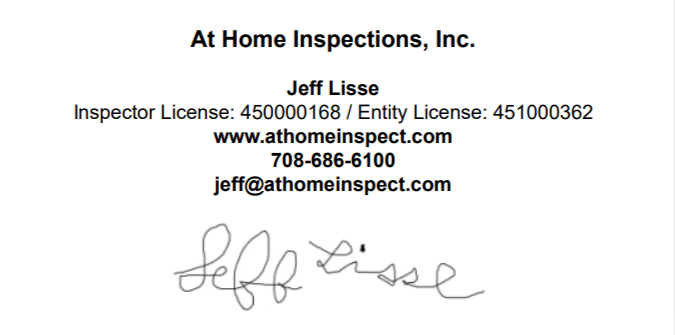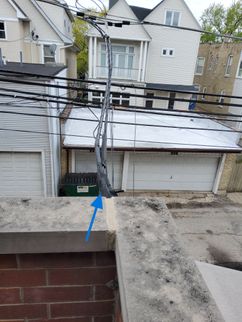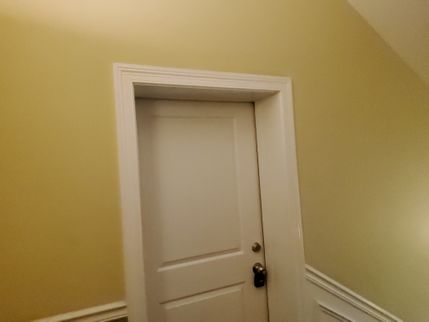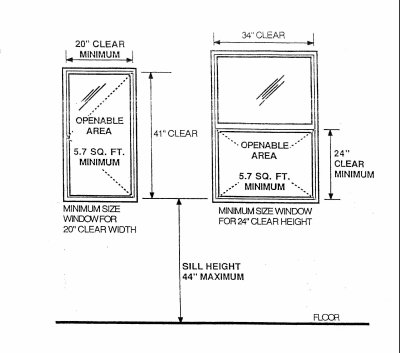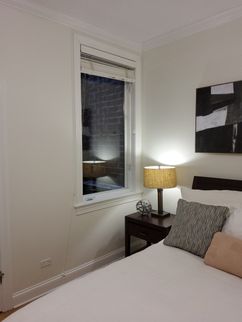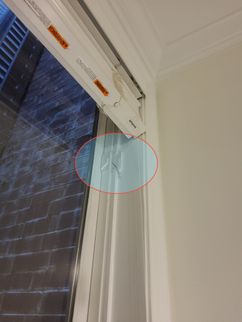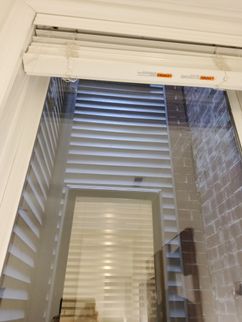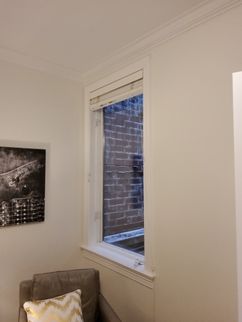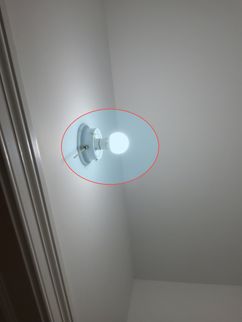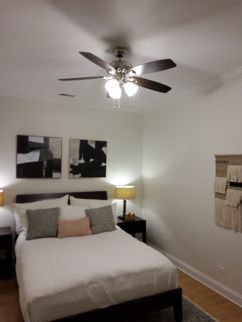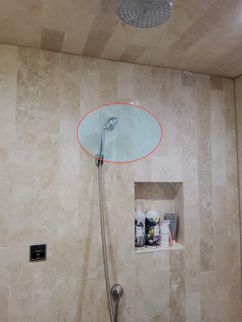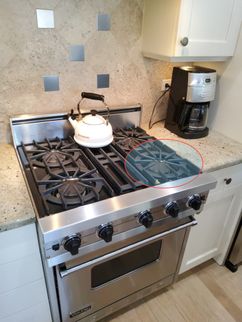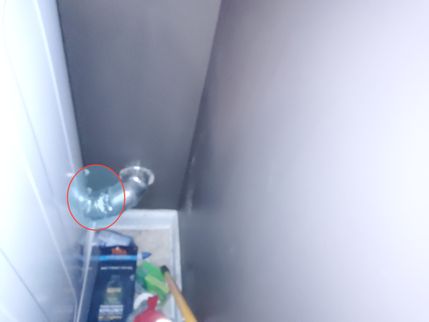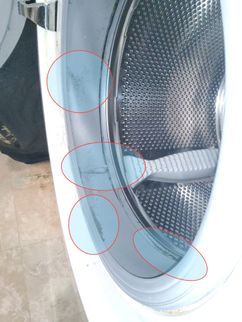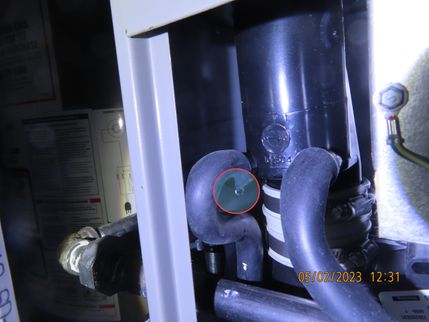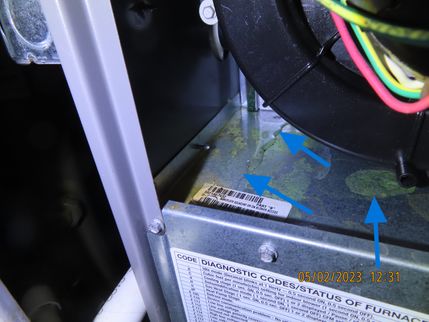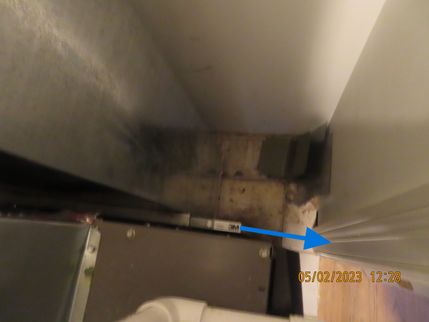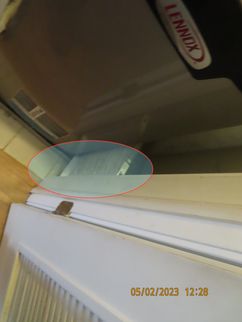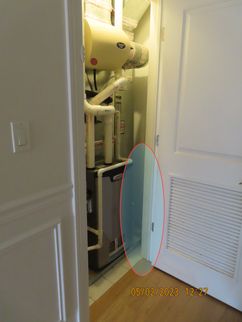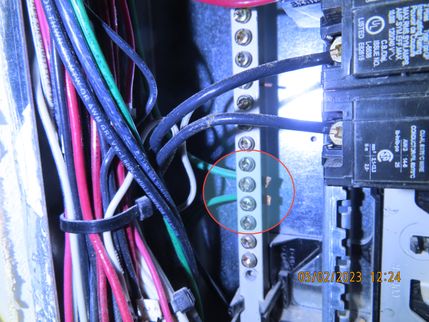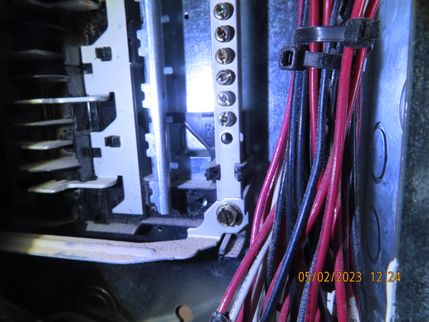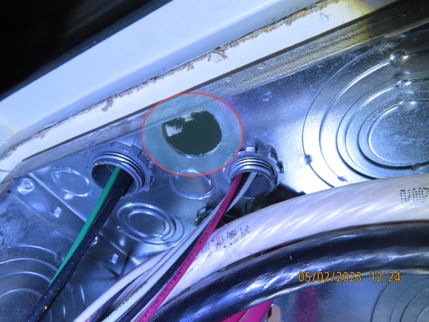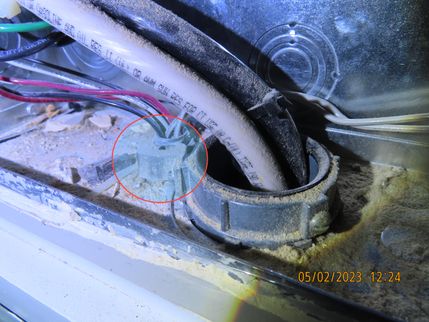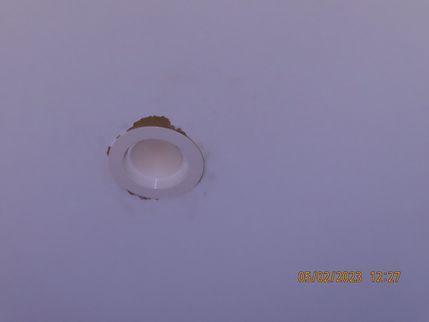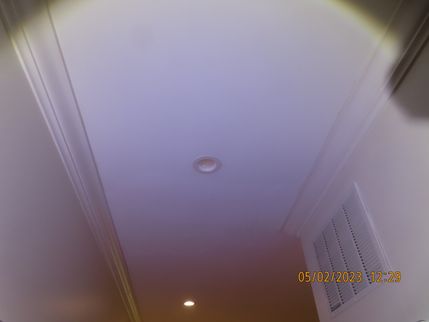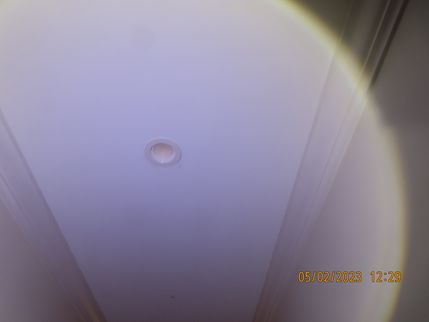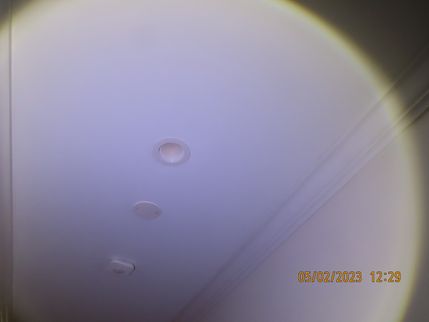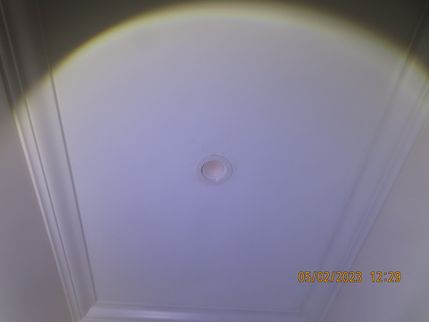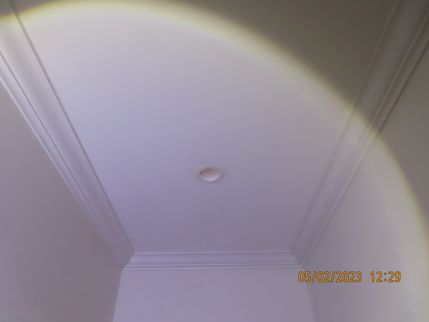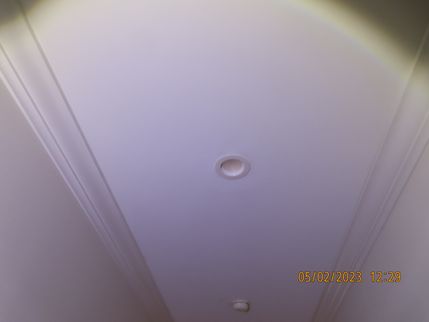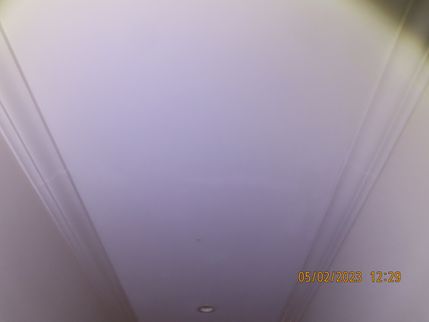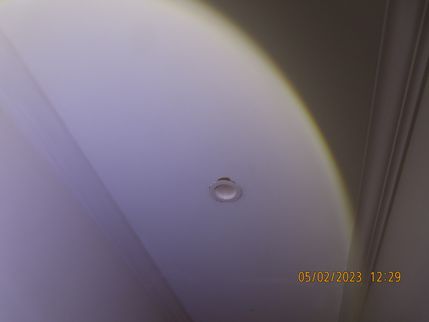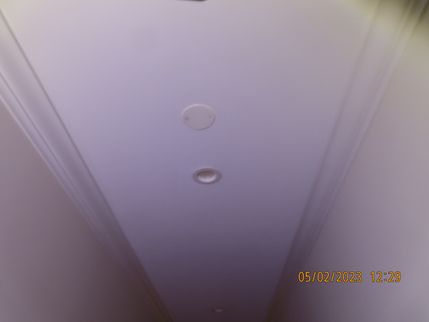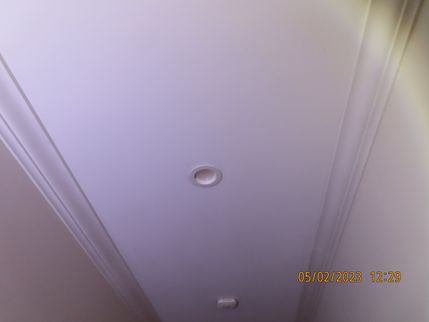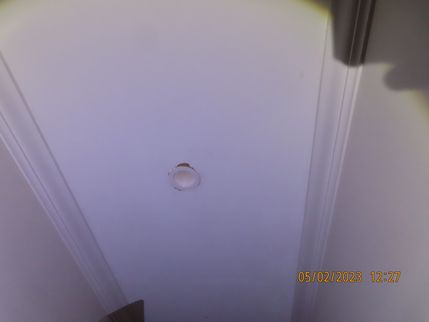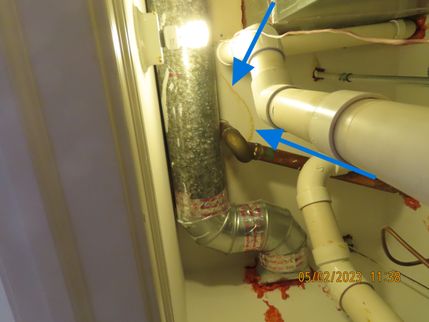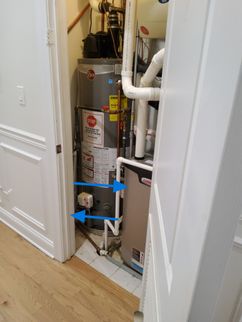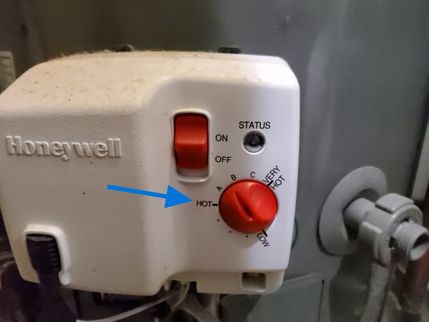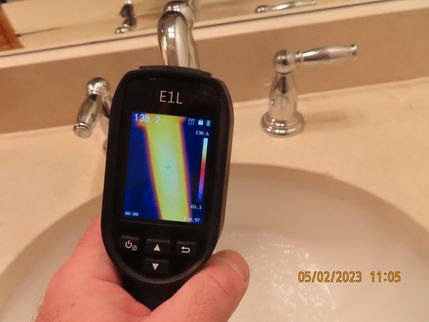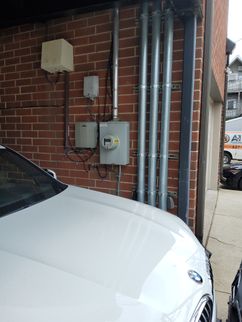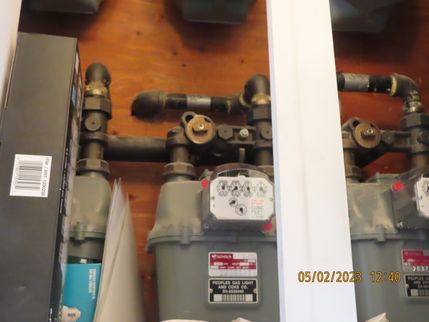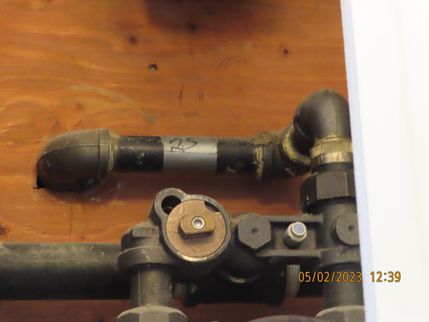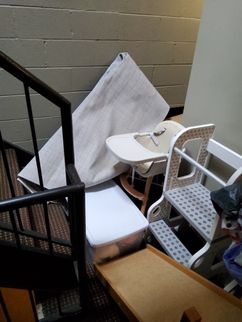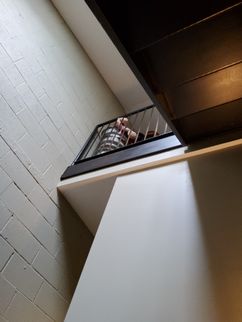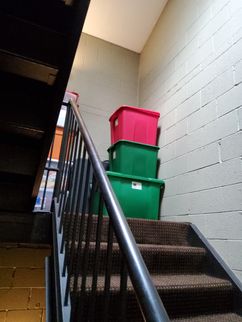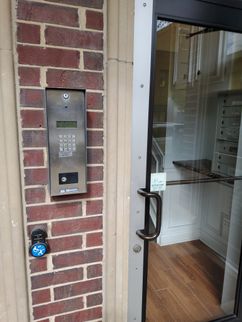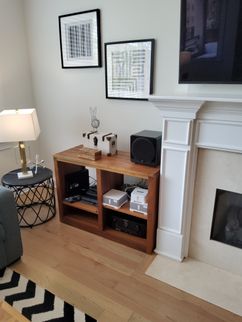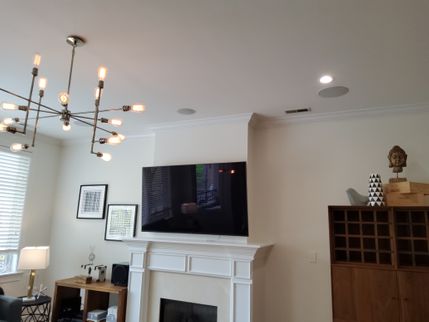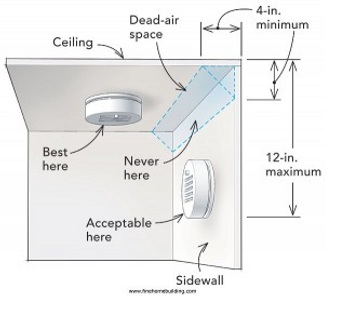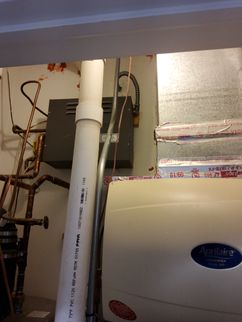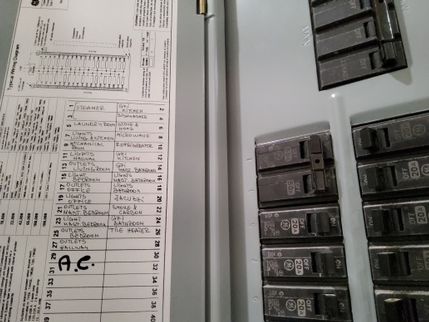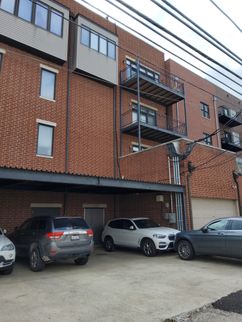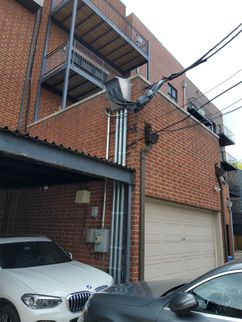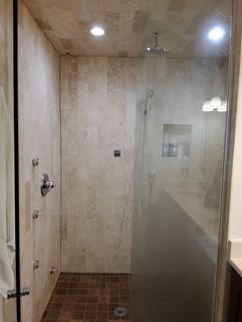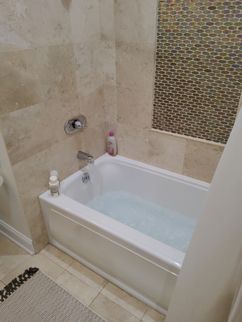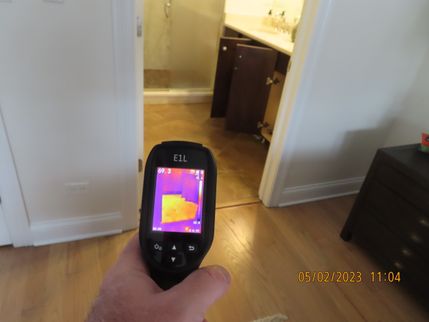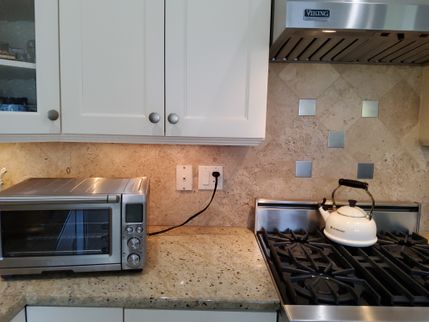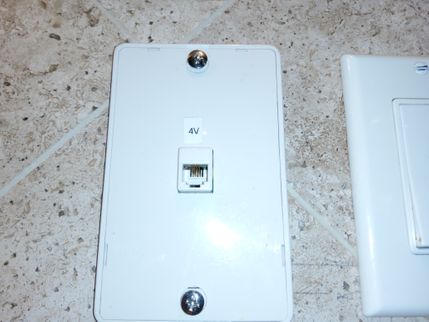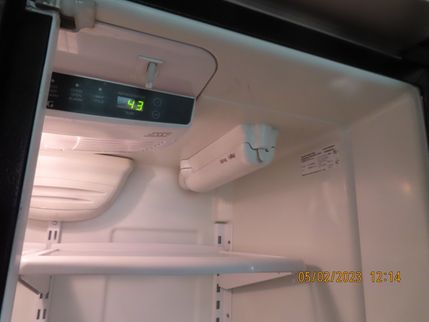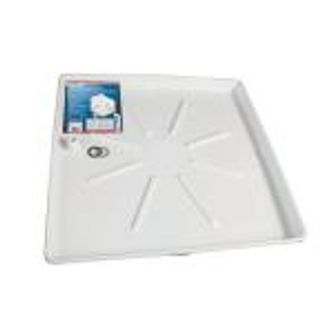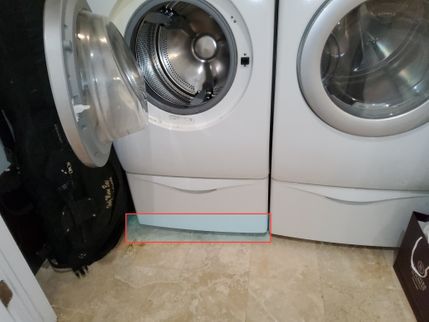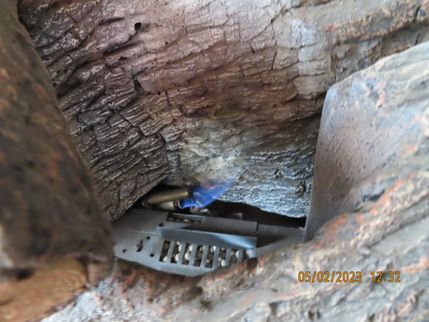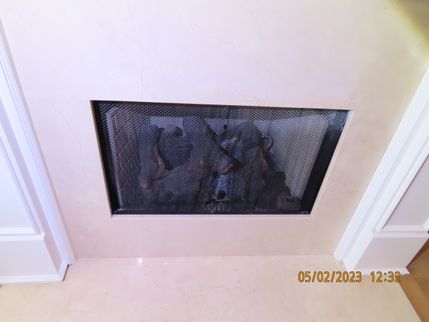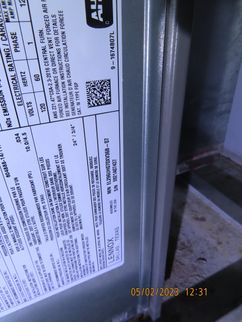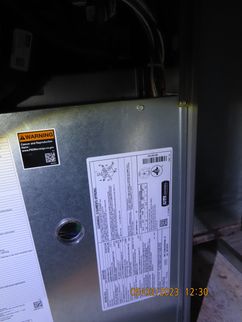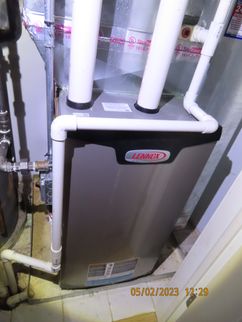IL Licensing
My Illinois home inspectors license expires on 11/30/2024.
Illinois home inspection entity licenses expire on the same date.
The purpose of this inspection is to visually examine readily accessible systems and components of a building (inspection address on contract) in accordance with this Subpart (Illinois Home Inspector License Act), using normal operating controls and opening readily accessible access panels.
How to Read This Report
The report is in a format that allows you to get to specific information quickly. Your report will have defects, concerns, general information, and things you should look into further. When looking at the report you have many different ways the information can be organized. Here are some examples of ways you can look at the report:
- HTML format: The report comes up in an internet format called HTML. I (your inspector) have tried to prioritize the information for you. For example, in the report if you click on the words "Significantly Deficient" on the left side of your screen you will see only the items I have marked as significantly deficient. My prioritization is my best guess and you should read the full report to avoid missing important information. In the HTML format you can quickly jump around the report but information has been filtered out. You may also see comments in a summary that does not have any photos but does have photos if you look at the full report. Failure to read the full report may result in damages that could have been avoided.
- PDF format: From the HTML report, at the top you have an option to print the full report via PDF. You can view the full report in PDF format on your computer. You can also print the full report and read it on paper. If you want the full report, please make sure you are printing the full report and not a summary with limited information. Reading the full report is the best way to make sure you do not miss any important information. Please note, I make every effort to include information I think is relevant. If we discussed anything that did not get into the report or if any information is different than you expected please contact me as soon as possible. I may be able to direct you to the correct location on the report or make modifications to the report so it better meets your specific needs.
- Repair Request: This is a very useful tool that can be used for many purposes. You can select items from the report to make your own list. You can include photos or not include photos. You can add your own comments to the comments and photos in the report. This allows you to go through your report and make a custom list. This can be a specific list of issues or concerns you would like addressed. Because you can add your own notes you can specify how you would prefer the issues to be taken care of. For example, for some items you could request a qualified person to repair before closing and for other items you could ask for some form of compensation to allow you to conduct repairs after closing. Agents or attorneys could generate a repair request on the clients behalf as well. Just forward your report to your representative as needed and let them know about the repair request feature. Here is a video about it: https://www.youtube.com/watch?v=IpSxVo-fiqk&t=11s.
Chapters and Sections
This report is divided into chapters. Each chapter is broken into sections. You can navigate between chapters with the click of a button on the left side margin.
Sections have descriptive information and observations.
Observation Labels
Narrative observations are colored, numbered and labeled to help you find and refer to them. Observation colors and labels used in this report are:
- Significantly Deficient:"Significantly deficient" means that in my opinion the condition is unsafe, not functional, and or it is significantly different from normal standards of practice. For all issues that are significantly deficient I strongly recommend having qualified contractors specify steps and costs to remedy the conditions. Note, there are often multiple options that impact the intrusiveness, cost, and schedule for repairs.
- Repair:Repair is used to designate anything that the inspector thinks should be repaired, replaced, or mitigated in some way. In the inspectors opinion these concerns should be addressed. These may have safety and functionality impacts. Impacts may develop or worsen in the future. There are risks associated with items that need repair or maintenance. Items might be worse than they looked at time of inspection as things change and as more information becomes available. The person purchasing the property should decide what to ask the current owner for. Please note, your inspectors opinion of who should repair which items may be offered as a courtesy and should not be considered as part of the inspection or part of the purpose and scope of the inspection.
- Monitor:Items marked this way should be watched or monitored regularly. The report will not be a complete list. All components should be monitored as feasible. Monitoring is recommended when your inspector is concerned that conditions may worsen or that repair or maintenance will be needed in the future. The inspection is a snapshot in time. This can distort or limit the inspection.
- Due Diligence:These are observations that may require further investigation. For example the inspection does not include identification of hazardous materials. I may point out a material or product that could be hazardous. To confirm if there is a hazard would require a specialist, samples taken, a lab, and permission from the current owner. All of those actions are outside of the scope of a standard inspection. Observations in this category are typically outside the scope of a standard inspection and should not be considered complete or material to the inspection. These observations should be considered unverified.
- Maintenance:These are items that should be considered part of normal or routine home ownership activities. Items such as servicing the furnace, cleaning the gutters, or changing filters. These items are not required to be reported as part of the standard inspection. There will be similar items that are not included, not noted, and not reported. Please read manuals and product documentation for all components of the home. Please follow all manufacturers recommendations and all local, county, and state rules. Observations in this category are typically outside the scope of a standard inspection and should not be considered complete or material to the inspection.
- Improvement or Upgrade:This category is for observations that are not necessarily defects, but which could be improved for safety, efficiency, or reliability. One reason this may happen is because standards change (both written and informal standards). These conditions may be considered normal or common practice. Common conditions and common practices that are not best practice do have negative impacts. When any work is done I recommend upgrading to current standards where feasible to do so. This category may be used for items that the inspector considers to be cosmetic. Please note, these observations are outside the required standards for home inspection. I provide these comments as a courtesy. These observations should not be considered complete or material to the inspection.
- Note:Refers to aside information and or any comments elaborating on descriptions of systems or limitations to the inspection. This can include general information This the information may not apply directly to the inspected property. This information is not directly part of the property inspection and should not be considered complete. Observations in this category are often outside the scope of a standard inspection and should not be considered complete or material to the inspection.
- Inspectors Notebook:These are notes and technical information that aid in the inspection process. I may leave such information in the report for reference purposes. These notes include technical information. These notes may have information from codes and other sources. Please note, this inspection is NOT a code inspection. It is NOT a compliance inspection. Please consult with the authority having jurisdiction for rules, laws, and local requirements. This report is the inspectors opinion and recommendations. Acting as a home inspector I do not represent the authority having jurisdiction. Acting as a home inspector I have no enforcement authority.
Icons Used In This Report
 Safety Concern: Safety concerns are noted throughout the report with or without this icon. This icon is just a way for me to call your attention to specific items that have safety concerns. Many items will have safety concerns that do not get this icon added.
Safety Concern: Safety concerns are noted throughout the report with or without this icon. This icon is just a way for me to call your attention to specific items that have safety concerns. Many items will have safety concerns that do not get this icon added.
 Possible Association Issue: When inspecting one unit of a multi-family property (condominiums and townhouses), I am not inspecting the outside or common areas as part of the inspection. I do not know for sure what issues are handled by an association and which are handled by owners. I can use this icon to point out things that may be the responsibility of an association. Common areas and areas that appear to be maintained by the association or their contractors are outside the scope of the inspection. I may report some association issues, this does not obligate me to report others. All comments marked this way should be considered incomplete.
Possible Association Issue: When inspecting one unit of a multi-family property (condominiums and townhouses), I am not inspecting the outside or common areas as part of the inspection. I do not know for sure what issues are handled by an association and which are handled by owners. I can use this icon to point out things that may be the responsibility of an association. Common areas and areas that appear to be maintained by the association or their contractors are outside the scope of the inspection. I may report some association issues, this does not obligate me to report others. All comments marked this way should be considered incomplete.
 Report Update: This icon indicates a change was made to the report after initial publishing. Changes can happen because of a mistake, more information has been uncovered, or as a result of an additional visit.
Report Update: This icon indicates a change was made to the report after initial publishing. Changes can happen because of a mistake, more information has been uncovered, or as a result of an additional visit.
 Repairs Noted: This icon may be used to call your attention to repairs. For all repairs it is best for the new owner to get all available information from the current owner, including contact information for the person who did the repair. It is wise to confirm the qualifications of the contractors that did the work. This is outside of the scope of the inspection but I do recommend that you follow up regarding all past repairs.
Repairs Noted: This icon may be used to call your attention to repairs. For all repairs it is best for the new owner to get all available information from the current owner, including contact information for the person who did the repair. It is wise to confirm the qualifications of the contractors that did the work. This is outside of the scope of the inspection but I do recommend that you follow up regarding all past repairs.
 Suspect Repairs: Suspect repairs are repairs that do not appear to have been done following normal standards of practice. Repairs that are not done well are likely to cause issues in the future. For suspect repairs it is best to have these reviewed further by qualified contractors.
Suspect Repairs: Suspect repairs are repairs that do not appear to have been done following normal standards of practice. Repairs that are not done well are likely to cause issues in the future. For suspect repairs it is best to have these reviewed further by qualified contractors.
 Pest Concern: Pest concerns are noted as a courtesy and are not part of the inspection. All pest concerns should be reviewed further by a qualified pest specialist. Any information provided regarding pest activity or pest damage should be considered incomplete.
Pest Concern: Pest concerns are noted as a courtesy and are not part of the inspection. All pest concerns should be reviewed further by a qualified pest specialist. Any information provided regarding pest activity or pest damage should be considered incomplete.
 Maintenance: Maintenance considerations are noted as a courtesy and are not included as part of the inspection. Maintenance should be anticipated as part of any property ownership. The inspection is not an attempt to capture or document maintenance considerations.
Maintenance: Maintenance considerations are noted as a courtesy and are not included as part of the inspection. Maintenance should be anticipated as part of any property ownership. The inspection is not an attempt to capture or document maintenance considerations.
 Monitor: Monitor is used to indicate that in my opinion (in the inspector's opinion) the condition or conditions should be monitored. Please note, any item that I am recommending to monitor may also need repair or may develop the need for repairs at a future time.
Monitor: Monitor is used to indicate that in my opinion (in the inspector's opinion) the condition or conditions should be monitored. Please note, any item that I am recommending to monitor may also need repair or may develop the need for repairs at a future time.
 Due Diligence: Due diligence indicates something that the client should consider getting more information about. Actions you can pursue include asking the current owner, consulting with qualified specialists to review further, and getting documentation and permits. For any item I mark as due diligence I am indicating that the information I have provided is incomplete. For example, if I were to find some electrical issues and mark these as due diligence it indicates that I am concerned that once a qualified electrician starts repairs they may find additional issues I did not note in the report. This is normal and should be expected when any qualified contractor is brought in to review further, repair, or replace anything.
Due Diligence: Due diligence indicates something that the client should consider getting more information about. Actions you can pursue include asking the current owner, consulting with qualified specialists to review further, and getting documentation and permits. For any item I mark as due diligence I am indicating that the information I have provided is incomplete. For example, if I were to find some electrical issues and mark these as due diligence it indicates that I am concerned that once a qualified electrician starts repairs they may find additional issues I did not note in the report. This is normal and should be expected when any qualified contractor is brought in to review further, repair, or replace anything.
 Note: Notes are meant to convey general information. Notes can be used for many different purposes. Conditions that are outside the scope of the inspection may be listed as notes. This does not mean these are not important considerations or that no issues were found. As an example, if something is suspected of being mold but has not been confirmed or if something is suspected to contain asbestos but has not been confirmed these items may get marked as deficiencies to call attention to them. However, I may mark these items just as notes or due diligence because the deficiency is only suspected and not confirmed. It is the clients responsibility to read the entire report and pursue all issues as needed in a timely fashion. I do not take any responsibility for prioritization. You must decide what issues are important for you and your family regardless of how I classify, organize, or prioritize.
Note: Notes are meant to convey general information. Notes can be used for many different purposes. Conditions that are outside the scope of the inspection may be listed as notes. This does not mean these are not important considerations or that no issues were found. As an example, if something is suspected of being mold but has not been confirmed or if something is suspected to contain asbestos but has not been confirmed these items may get marked as deficiencies to call attention to them. However, I may mark these items just as notes or due diligence because the deficiency is only suspected and not confirmed. It is the clients responsibility to read the entire report and pursue all issues as needed in a timely fashion. I do not take any responsibility for prioritization. You must decide what issues are important for you and your family regardless of how I classify, organize, or prioritize.
🌲 Efficiency / IAQ: Efficiency and IAQ (Indoor Air Quality) indicates issues found that are likely to change seasonally. These issues impact fuel costs and also may cause condensation, water damaged, mold growth, or similar air quality issues.
Definitions And Limitations
Home Inspection: This definition is from the standard operating procedures as defined in the IL Home Inspector License Act. For all inspections I am following state laws. However, this does not prevent exclusions. Any item marked as not inspected has been removed from the scope of the inspection. When agreed upon with the client, entire systems can be removed from the inspection and common areas are excluded for any single unit inspections in a multi-family property.
"Home inspection" means the examination and evaluation of the exterior and interior components of residential real property, which includes the inspection of any 2 or more of the following components of residential real property in connection with or to facilitate the sale, lease, or other conveyance of, or the proposed sale, lease or other conveyance of, residential real property:
- heating, ventilation, and air conditioning system;
- plumbing system;
- electrical system;
- structural composition;
- foundation;
- roof;
- masonry structure; or
- any other residential real property component as established by rule.
Inspection does not include a code compliance inspection.
Throughout this report standard inspection, residential inspection, property inspection, residential property inspection, and similar terms are to be considered to have the same definition as home inspection (above).
Home Inspection Report: "Home inspection report" or "inspection report" means a written evaluation prepared and issued by a home inspector upon completion of a home inspection, which meets the standards of practice as established by the Department.
Limit Of Liability: The limit of liability regarding any questions, concerns, or issues of any kind arising from the usage of this report or reliance on any information provided as part of the inspection is limited to the fee paid for the inspection.
Client Or Customer: "Client" means a person who engages or seeks to engage the services of a home inspector for an inspection assignment.
Report Is Not Transferable: This report is not transferable. Other than the inspector, inspection company, and its representatives, only the specific party or parties listed as the customer / client can use this report for any reason.
Decorative Or Cosmetic: Ornamental; not required for the operation of the essential systems and components of a home. All decorative or cosmetic concerns are excluded from the inspection. Any comments about such items should be considered incomplete and provided only as a courtesy.
Dismantle: To take apart or remove any component, device or piece of equipment that would not be taken apart or removed by a homeowner in the course of normal and routine home owner maintenance. This inspection is visual. There will be limited or no dismantling. If any item is dismantled that does not obligate the inspector to dismantle any other item.
Further Evaluation: Examination and analysis by a qualified professional, tradesperson or service technician beyond that provided by the home inspection.
Household Appliances: Kitchen, laundry and similar appliances, whether installed or free-standing.
Inspect: To visually examine readily accessible systems and components of a building in accordance with this Subpart (Illinois Home Inspector License Act), using normal operating controls and opening readily accessible access panels.
Installed: Attached in such a manner that removal requires tools. Only items that are both readily accessible and installed are included in the inspection.
Normal Operating Controls: Devices such as, but not limited to, thermostats, switches or faucets intended to be operated by the homeowner. In general shutoff valves, overcurrent protection, and similar components are not operated during an inspection.
Readily Accessible: Available for visual inspection without requiring moving of personal property, dismantling, destructive measures, or any action that will likely involve risk to persons or property.
Readily Operable Access Panel: A panel provided for homeowner inspection and maintenance that is within normal reach, can be removed by one person, and is not sealed in place. *Note, the assessment regarding if any panel is readily operable is to be made at the sole discretion of the inspector at time of inspection.
Recreational Facilities: Spas, saunas, steam baths, swimming pools, and exercise, entertainment, athletic, playground or other similar equipment and associated accessories. Recreational facilities and accessories are not included in the inspection.
Report: To communicate in writing.
Representative Number: One component per room for multiple similar interior components, such as windows, doors and electric outlets, and one component on each side of the building for multiple similar exterior components.
Roof Drainage Systems: Components used to carry water off a roof and away from a building.
Significantly Deficient: Unsafe or not functioning.
Shut Down:
Shut Down: A state in which a system or component cannot be operated by normal controls.
Solid Fuel Burning Appliances: A hearth and fire chamber or similar prepared place in which a fire may be built and that is built in conjunction with a chimney; or a listed assembly of a fire chamber, its chimney and related factory-made parts designed for unit assembly without requiring field construction.
Structural Component: A component that supports non-variable forces or weights (dead loads) and variable forces or weights (live loads).
System: A combination of interacting or interdependent components, assembled to carry out one or more functions.
Technically Exhaustive Inspection: An investigation that involves dismantling or the extensive use of advance techniques, measurements, instruments, testing, calculations or other means. This inspection is NOT technically exhaustive.
Under-Floor Crawl Space: The area within the confines of the foundation and between the ground and the underside of the floor. Under-Floor spaces are included in the inspection only when readily accessible.
Unsafe: A condition in a system or component that poses a significant risk of personal injury or property damage during normal, day-to-day use. The risk may be due to damage, deterioration, improper installation or a change in accepted residential construction standards.
Wiring Methods: Wiring Methods: Includes identification of electrical conductors or wires such as, but not limited to, non-metallic sheathed cable (Romex), armored cable (BX) or knob and tube.
Purchasing property involves risk: The purpose of a home inspection is to provide a professional opinion of the condition of a property at a moment in time. The inspection and any resulting report do not mitigate any risk. The report must be read and understood by the client and the client must take further actions in order to benefit from the inspection. Neither an inspection nor a report can substitute for or serve as a warranty or guarantee of any kind. Home warranties can be purchased separately from insuring firms that provide this service.
A home inspection is visual and not destructive: The descriptions and observations in this report are based on a visual inspection of the structure. I inspect the aspects of the structure that can be viewed without dismantling, damaging or disfiguring and without moving furniture, personal items, or interior furnishings. Areas that are concealed, hidden or inaccessible to view are not covered by this inspection. Some systems cannot be tested during this inspection. Our procedures involve non-invasive investigation and non-destructive testing which limits the inspection.
This is not an inspection for code compliance: This inspection and report are not intended for code compliance. All houses fall out of code compliance shortly after they are built, as the codes continually change. Municipalities can choose to adopt and phase in sections of the codes on their own timetables. Only the authority having jurisdiction (typically the town) can dictate what is required. As a home inspection everything I say and report should be considered my opinion or my recommendation. I can not require anyone to comply with any specific building code or building standard.
This is just my opinion: Construction techniques and standards vary. Information in this report are my opinions. Other inspectors and qualified contractors are likely to have differing opinions. You are welcome and encouraged to seek opinions from other professionals.
SUMMARY
Significantly Deficient
See repair, monitor, and other categories.Repairs
- EAUAE-2 ◾Equipment And Utilities At Exterior:
Electrical Wire Clarences 🛑 Safety Concern
Electrical should be protected from accidental contact.
Overhead Wires / Service Drop:
- Close to balcony. 10 feet or more recommended.
Recommendations:
- Qualified electrician.
I recommend repairing. This is recommended for safety.
- ES-4 ◾Exterior Structures:
Unit Numbers 🏢 Possible Association Issue
Unit numbers are recommended at all unit entrances. This is to allow emergency personal to find the correct unit quickly.
Recommendations:
- I recommend adding unit numbers for increased safety.
- Note, this may be an association issue.
- ES-5 ◾Exterior Structures:
Exterior Door Lighting
At entrances it is helpful to have lighting both inside and outside.
Exterior Lighting:
- Lights at back were not working.
Recommendations:
I recommend changing light bulbs and further evaluation by a qualified electrician if needed.
I recommend a qualified electrician to evaluate further, add lighting and repair exterior electrical if needed for normal function, for increased safety and to meet your needs.
- I1-1 ◾Interiors:
Emergency Escape And Rescue 🛑 Safety Concern
Rules regarding emergency escape and rescue are different in different towns and have changed over time. Please check with the town for exact / current rules.
Emergency Escape And Rescue Concerns:
- Finished area (may be considered a sleeping area) with no secondary door or window exits.
Egress Wells:
- Egress appeared to be challenging (see photo).
- Upper window lock is out of reach. Window not tested.
- A ladder would also need to be added for egress.
- Egress issues noted at multiple locations.
💡There are standards regarding secondary exits. Secondary exit standards are designed to make emergency escape and rescue faster. If not required for any reason I recommend meeting current safety requirements as an upgrade. I strongly recommend that all families test and practice emergency escape plans.
Recommendations:
- Qualified window specialist.
- Qualified framing carpenter.
- Qualified siding specialist.
I recommend consulting with qualified contractors to review further regarding options to address this. This is recommended for safety.
- I1-2 ◾Interiors:
Closet Lighting
Lighting:
- Missing cover.
Recommendations:
- Qualified electrician.
- Exposed lights are not recommended for any tight spaces due to fire safety concerns.
- High efficiency light bulbs can reduce fire safety risks. Replacing fixtures with ones that only take low heat bulbs is a safer option.
I recommend replacing. This is recommended for increased safety.
- I1-3 ◾Interiors:
Lighting
There were concerns regarding lighting fixtures. Electrical defects are representative (not all inclusive).
Ceiling Fans:
- Fan did not operate properly.
Recommendations:
- Qualified electrician.
- I recommend all electrical be evaluated for similar conditions and be repaired, replaced or improved as deemed necessary by a qualified electrician.
I recommend repairing or replacing. This is recommended for normal function and for safety.
- I1-4 ◾Interiors:
Showers
There were issues noted regarding a shower.
- Water sprays out to the side when testing hand held shower.
Recommendations:
- Qualified plumber.
I recommend repairing, replacing or maintenance. This is recommended for normal function.
- I1-6 ◾Interiors:
Coverings 🏢 Possible Association Issue
Issues were noted regarding coverings.
Water Intrusion:
- There was discoloration that appeared to be water intrusion.
Recommendations:
- Qualified carpenter.
I recommend repairing. This is recommended for normal function.
- I1-8 ◾Interiors:
Cooktops / Ovens
💡I do not check multiple features and settings. I do not wait for the device to reach full temperature or check the temperature against settings.
Gas Burners:
- One burner not working.
Recommendations:
- Qualified appliance specialist.
I recommend repairing or replacing. This is recommended for normal function and for safety.
- I1-9 ◾Interiors:
Refrigerators
💡I do not change the settings, the thermostat controls are not tested. For all appliances it is a good idea to get and read the manual and to follow all maintenance recommendations.
Ice Maker:
- Off and not tested.
Recommendations:
- Qualified appliance specialist.
I recommend maintenance, repairing or replacing. This is recommended for normal function.
- I1-10 ◾Interiors:
Dryer Connections 🛑 Safety Concern 🔧 Maintenance
💡Fires from dryer lint are common due to both maintenance and installation issues.
Transition Ducting:
- Foil flexible duct. Most foil ducting is not approved for dryers. Some do meet UL 2158A standards for a dryer but I can not confirm this. The rigid is inexpensive and much safer. I strongly recommend replacement with rigid for fire safety. Only smooth wall metal ducting should be used going into coverings.
Recommendations:
- Qualified dryer vent specialist.
- For all properties I recommend replacing the flexible ducting with new rigid or smooth wall metal ducting.
- For all permanent vent ducting I recommend cleaning regularly, and cleaning before first use after purchase.
- I recommend cleaning all lint filters, screens, and traps for fire safety.
I recommend replacing. This is recommended for safety.
- I1-12 ◾Interiors:
Clothes Washing Connections
💡Washing machine connections are inspected. Washing machines and similar appliances are not inspected. Information reported about washing machines is as a courtesy or included as it relates to the connections.
Front Loading Washing Machine:
- Problems with mold in front loading washing machines is common.
- Mold was visible.
- Whether repair is possible or replacement will be needed varies from one model to another and from one family to another.
- I recommend repair or replacement.
- If possible I recommend replacement with one that is not a front loader to avoid further air quality issues.
Recommendations:
- Qualified plumber.
- For all washing machines I recommend hoses with some form of protection from flooding. I recommend this as an upgrade. Here is a link to one example: http://media.wattswater.com/F-FloodSafe.pdf
I recommend repairing or replacing. This is recommended for normal function and to prevent water damage.
- S-5 ◾Systems:
Heating Equipment
Concerns were noted regarding heating equipment.
Equipment Condition:
- Active leaking (equipment was wet) at time of inspection.
- Rust and corrosion was visible indication ongoing leaking or damaged equipment.
Filter:
- Filter access was difficult. I recommend consulting with specialists for options to improve access.
Recommendations:
- Qualified heating specialist.
I recommend maintenance or repairing. This is recommended for normal function and for increased safety.
- S-9 ◾Systems:
Subpanels
There were concerns regarding the electrical.
Panel Issues:
- Missing knock out covers.
Bushings:
- "Grounding bushing" installed, not grounded. A grounding bushing may or may not be required. It is unusual for this not to be connected and it may be required from proper grounding and bonding.
Ground Bars:
- Missing.
- Grounds connected to the neutral bus in subpanel.
Recommendations:
- Qualified electrician.
I recommend repairing. This is recommended for safety.
- S-12 ◾Systems:
Lighting 🏢 Possible Association Issue 🛑 Safety Concern ❓Suspect Repairs
There were concerns regarding lighting fixtures. Electrical defects are representative (not all inclusive).
There were multiple issues noted at light fixtures. Installation does not appear to be up to normal standards of practice. There were many cosmetic issues around the light fixtures. At some locations coverings were damaged. Some of the damage appeared to be water marks. It was not clear which issues around the lighting was due to installation issues and which were due to water intrusion or leaks from above.
Lighting Fixtures:
- Coverings were damaged around light fixtures. This indicates non-qualified contractor work, other issues should be expected.
Recommendations:
- Qualified electrician.
- I recommend all electrical be evaluated for similar conditions and be repaired, replaced or improved as deemed necessary by a qualified electrician.
I recommend repairing or replacing. This is recommended for normal function and for safety.
- S-15 ◾Systems:
Drains Waste And Vents 🏢 Possible Association Issue
Issues were noted regarding the plumbing system.
Drain Piping:
- Water marks.
Drain waste and vents use gravity (and sometimes pumps) to remove waste and waste water from the property. There are issues with plumbing systems that only cause an issue in high winds or when the system is under heavy usage. Plumbing defects, may go undetected due to symptoms being intermittent. When repairs are being done often additional conditions become known and also require repair.
Recommendations:
- Qualified plumber.
I recommend repairing or replacing. This is recommended for normal function and for increased safety.
- S-17 ◾Systems:
Water Heating 🛑 Safety Concern
Equipment Conditions:
- Not accessible. There is currently no proper access to the water heater. I recommend repair by a qualified party. This may require relocation equipment. Hidden leaks and damage are common with this type of installation.
Temperature:
- Water temperature was hot to the touch. Please adjust per your safety needs.
Recommendations:
- Qualified plumber.
- I recommend securing and keeping the manual with maintenance instructions near the equipment in a safe location.
- I recommend following maintenance recommendations for all equipment.
- I recommend making sure the water heater temperature is set correctly for your safety needs and comfort.
I recommend maintenance, repairing or replacing. This is recommended for normal function and for safety.
Monitor
- ES-2 ◾Exterior Structures:
Rooftop Deck 🏢 Possible Association Issue
There was a rooftop deck. Rooftop decking can complicate roof maintenance, repair, replacement, and prevents inspection of roof components.
Recommendations:
- I recommend monitoring for any leaks and roof repair, maintenance, or replacement as needed.
Due Diligence
- I-2 ◾Introduction:
Cooling Equipment - Too Cold To Test 🏢 Possible Association Issue
Testing the cooling equipment when it is cold outside can damage the air conditioning equipment.
- The cooling system was not tested due to cold conditions at time of inspection.
- Equipment was not accessed / not inspected.
Recommendations:
- I recommend asking current owners for documentation including maintenance records for all heating and cooling equipment.
- I recommend testing when conditions permit.
- I recommend a qualified heating and cooling specialist to clean and maintain the equipment.
- EAUAE-3 ◾Equipment And Utilities At Exterior:
Obstructed View 🏢 Possible Association Issue
Conditions at time of inspection limited access.
Recommendations:
- I recommend inspecting further when conditions permit.
- I recommend monitoring and normal maintenance.
- I recommend further review by qualified contractors as needed.
- EAUAE-5 ◾Equipment And Utilities At Exterior:
Obstructed View
Conditions at time of inspection limited access.
Recommendations:
- I recommend inspecting further when conditions permit.
- I recommend monitoring and normal maintenance.
- I recommend further review by qualified contractors as needed.
- EAUAE-6 ◾Equipment And Utilities At Exterior:
Common Areas Not Inspected
The exterior and common areas were not inspected. Any photos or information about shared areas or the exterior should be considered incomplete.
Recommendations:
- I recommend asking the association where all shutoffs are located (gas, water, and electrical) or who to contact if needed.
- I recommend asking the association for more information about any areas of concern regarding shared areas or the exterior.
- EAUAE-7 ◾Equipment And Utilities At Exterior:
Common Areas Not Inspected 🛑 Safety Concern 🔧 Maintenance
The exterior and common areas were not inspected. Any photos or information about shared areas or the exterior should be considered incomplete.
Recommendations:
- I recommend asking the association where all shutoffs are located (gas, water, and electrical) or who to contact if needed.
- I recommend asking the association for more information about any areas of concern regarding shared areas or the exterior.
- I recommend talking to the association regarding repairs, budgets, and timelines for expected repairs and maintenance.
- ES-3 ◾Exterior Structures:
Intercoms 🏢 Possible Association Issue
Low voltage systems are not included in the inspection. Intercoms, intercom features and audio / video devices are not inspected. Any issues noted about low voltage is provided as a courtesy and should be considered incomplete.
Intercom:
- Not tested.
Recommendations:
- I recommend asking the current owner about any features you have questions about and further review, repair or replacement as needed.
- 💡This may be an association issue.
- S-8 ◾Systems:
Not Inspected Electrical
💡For any item staying with the property, I recommend getting all available information from the current owner. These items may need repair, maintenance, or removal. There could be safety risks involved. Any photos taken of such items are not the purpose or scope of the inspection. Comments made about excluded items are a courtesy and should not be considered complete information.
Items, Systems, And Components Not Inspected:
- Low voltage wiring, systems, and components and accessories.
- Alarm systems, components and anything that may be connected to an alarm. To prevent accidental false alarms.
- Antenna and similar devices.
- Ancillary wiring, systems, and components not a part of the primary electrical power distribution system.
Recommendations:
- Qualified electrician.
I recommend getting as much information as possible, maintenance, repairing or upgrading. This is recommended for normal function and for increased safety.
- S-10 ◾Systems:
Smoke Detectors
💡I do not test smoke detectors, alarms, or similar devices. For most properties it is best to replace the smoke detectors and carbon monoxide detectors with new ones on move in.
Smoke Detector Recommendations:
- For all properties I recommend replacing the detectors to meet current manufacturer installation instructions.
- Photo-electric type alarms are recommended at locations like kitchens to prevent false alarms.
- I recommend cleaning regularly per manufacturers recommendations.
- I recommend the 10 year type batteries. No more replacing batteries for the detectors.
- Replace batteries twice per year (if not upgraded to the 10 year type).
- Test regularly, twice per year.
- Interconnected detectors may be more effective.
- For more information see the following link from NFPA Information.
Recommended Locations:
- At least one per structure.
- At least one per floor.
- At least one within 20 feet of all bedrooms on each floor.
- At least one in each bedroom or sleeping area.
The death rate per 1,000 reported home fires was more than twice as high in homes that did not have any working smoke alarms compared to the rate in homes with working smoke alarms (13.0 deaths vs. 5.8 deaths per 1,000 fires). Per NFPA.org
Recommendations:
- I recommend replacing detectors on move in and every 5 to 10 years following manufacturers instructions.
- I recommend replacing with modern devices (interconnected and 10 year batteries).
- S-11 ◾Systems:
Carbon Monoxide Detectors
💡I do not test carbon monoxide detectors, alarms, or similar devices.
Carbon Monoxide Detector Recommendations:
- For all properties I recommend replacing the detectors to meet current manufacturer installation instructions.
- I recommend cleaning regularly per manufacturers recommendations.
- Test regularly, twice per year.
- Interconnected detectors may be more effective.
- For more information see the following link from NFPA Information.
Recommended Locations:
- At least one per floor.
- At least one within 10 feet of all bedrooms on each floor.
Recommendations:
- I recommend replacing detectors on move in and every 5 to 10 years following manufacturers instructions.
- I recommend replacing with modern devices (interconnected and 10 year batteries).
- S-13 ◾Systems:
Not Inspected Plumbing .....
💡For any item staying with the property, I recommend getting all available information from the current owner. These items may need repair, maintenance, or removal. There could be safety risks involved. Any photos taken of such items are not the purpose or scope of the inspection. Comments made about excluded items are a courtesy and should not be considered complete information.
Items, Systems, And Components Not Inspected:
- Steam accessories.
- No pan for steam accessory.
- No shut off within site of unit. Shut off per panel schedule in panel.
Recommendations:
- Qualified plumber.
I recommend getting as much information as possible, monitoring, maintenance, repairing or replacing. This is recommended to meet your needs and for increased safety.
- S-14 ◾Systems:
Common Areas Not Inspected
Water main location was not found or not confirmed.
Recommendations:
- I recommend asking the association where all shutoffs are located (gas, water, and electrical) or who to contact if needed.
- I recommend asking the association for more information about any areas of concern regarding shared areas or the exterior.
- I recommend talking to the association regarding repairs, budgets, and timelines for expected repairs and maintenance.
- AI-2 ◾Additional Information:
Personal Items Obstructed View
- Personal items blocked access to some areas.
- Personal items are not inspected.
Recommendations:
- I recommend inspecting further when conditions permit.
- I recommend monitoring and normal maintenance.
- AI-3 ◾Additional Information:
Create Repair List - Instructions
This report (by default) is formatted in HTML. This format is powerful and allows people to find what they are looking for quickly. This format can be confusing when compared to paper. If you have trouble finding what you are looking for you might want to use one of the PDF formats. You can make a PDF of the entire report or just the summary. The buttons for this are at the very top of the HTML report.
You can also make your own lists with just the items you want included. We call these repair lists. The repair request button is also at the top with the PDF report options.
You can do all of the following making your own repair list:
- You can include only the items you select for your custom reports.
- In your custom report you can add specific photos from the report. Unselected photos will not be included and photos from items you did not select will also not show up in your custom report.
- You can add your own comments to each item in your custom report. This may include your own notes, notes from a contractor, estimate information, or your specific requests such as specific repairs desired or some form of credit request.
- Please see the following video for instructions: https://www.youtube.com/watch?v=IpSxVo-fiqk
- AI-5 ◾Additional Information:
Home Owner Associations
When you purchase property with an association you should get as much information as you can about the association. This is outside of the scope of a property inspection. Information you should get and read includes:
- Minutes From Recent Meetings. You should get and read the minutes so you have a good idea of what issues are impacting ownership in the building.
- Declarations. This might also be called a CC&R. This document is typically required and should be recorded in country records. When recorded in the country records it automatically binds new owners (meaning you can be restricted by these documents even if you do not read them). Typically these documents establish the authority of the association, collect of dues, define the boundaries of units and common areas such as parking spaces, decks, patios etc. It is common for these documents to include usage and alteration restrictions, the division of costs among the owners, and collection, enforcement, and dispute resolution procedures.
- Bylaws. These generally include how to call and conduct meetings, how to vote, how to levy assessments, how to manage association business, and how to keep records. These often establish a board of directors or other governing body, and a group of officers, to make decisions and supervise the association’s day-to-day operations. In some cases, these provisions are incorporated in the CC&Rs rather than made a separate Bylaws document.
- Rules. The Rules of a homeowners association may include fine or penalty provisions for violations of the governing documents. Not all homeowners associations have Rules, but those that do not can create them at any time.
- Budgets. The association should have the current budget and the budget for the most recent fiscal year.
- Special assessments. Special assessments are above the dues that are normally collected each month. You should specifically ask to see a record of any past special assessments and you should ask if there are any planned. Special assessments may indicate an issue with the building or an issue with the finances.
- Articles Of Incorporation. These documents will only exist if the association is incorporated.
Maintenance Items
- EAUAE-8 ◾Equipment And Utilities At Exterior:
Air Conditioning Equipment 🏢 Possible Association Issue
Equipment was not accessed. Equipment is likely to be in common areas not accessed.
Equipment Testing:
- It was too cold to test.
Recommendations:
- Qualified cooling specialist.
- I recommend asking the current owner for all applicable information.
- 💡This is likely an association issue. I recommend contacting the association for more information and further evaluation as needed by qualified contractors.
I recommend maintenance. This is recommended for normal function.
- S-4 ◾Systems:
Forced Air Distinguishing Characteristics 📝 Note 🔍 Due Diligence 🌲 Efficiency / IAQ 👁🗨 Monitor
- Forced air heating systems use air flow via ducting to distribute heating.
- Forced air heating systems typically accommodate cooling systems as well with a shared distribution system.
Recommendations:
- I recommend asking the current owner for all documentation regarding the installation, maintenance, and repairs.
- I recommend cleaning per manufacturers recommendations.
- I recommend having unit cleaned if maintenance has not been done recently or can not be confirmed.
- S-7 ◾Systems:
Common Area Cooling Distinguishing Characteristics
- Common areas were not inspected.
- Cooling equipment was not accessed and not inspected.
- Conditions at time of inspection limited access to the cooling system.
Recommendations:
- I recommend inspecting further when conditions permit.
- I recommend having units cleaned if maintenance has not been done recently or can not be confirmed.
📚FULL REPORT
◾Introduction
Inspection Conditions
Contract Sent: Before Inspection
Contract Signed: Before Inspection
Property Type: Condo (One Unit)
Year of Construction (Estimated): Post 2000 (2008)
Temperature (Fahrenheit, Estimated): Below 50°
Weather: Mild Conditions (☁️Overcast)
Cooling Equipment - Too Cold To Test 🏢 Possible Association Issue
Testing the cooling equipment when it is cold outside can damage the air conditioning equipment.
- The cooling system was not tested due to cold conditions at time of inspection.
- Equipment was not accessed / not inspected.
Recommendations:
- I recommend asking current owners for documentation including maintenance records for all heating and cooling equipment.
- I recommend testing when conditions permit.
- I recommend a qualified heating and cooling specialist to clean and maintain the equipment.
Common Areas Not Inspected
The nature of multi-family inspections means the scope of the inspection is limited. Common areas may be partially accessed or not accessed at all. Accordingly, this report should not be considered a standard residential inspection. Much of the areas of interest (including the siding, roofing, structure, and parts of other systems) may not be accessed. No inspection covers all conditions or concerns that may exist now or develop at a later date. The reporting of conditions that are listed anywhere in this report as not inspected (obstructed view or possible common areas) should be considered incomplete and other similar or related conditions may exist that were not reported. The goal of this report is to note items in the individual unit inspected.
Recommendations:
- For all purchases where any association or shared property is involved it is best to get and read the appropriate documents: For example budgets, rules, by-laws, roles and responsibilities, and similar information.
- As your inspector I do not have access to this information and every association can be different regarding what are home owner and what are association or shared responsibilities.
- For all properties it is important to know how to shut off utilities if needed.
- I recommend asking the association regarding the locations of shutoffs, disconnects, and similar devices. You should either know where these devices are and how to access them or have an emergency contact to shut things off if needed. This can be an issue with water services, electrical services, and or gas services.
◾Equipment And Utilities At Exterior
Electrical
Equipment Outside: Common Areas Not Inspected, Limited View
Service (Drop / Lateral, Entrance Conductors, Cables, And Raceways): Overhead, Overhead Wire Clarences
Electrical Service Grounding: Overhead Service (Ground Rod Visible)
Exterior Electrical: Outlets Found (3, Tested And Reset)
Obstructed View 🏢 Possible Association Issue
Conditions at time of inspection limited access.
Recommendations:
- I recommend inspecting further when conditions permit.
- I recommend monitoring and normal maintenance.
- I recommend further review by qualified contractors as needed.
Plumbing
Main Fuel Shutoff Locations: Outside (Front)
Exterior Plumbing: Not Inspected (Common Area, Obstructed View)
Obstructed View
Conditions at time of inspection limited access.
Recommendations:
- I recommend inspecting further when conditions permit.
- I recommend monitoring and normal maintenance.
- I recommend further review by qualified contractors as needed.
Common Areas Not Inspected
The exterior and common areas were not inspected. Any photos or information about shared areas or the exterior should be considered incomplete.
Recommendations:
- I recommend asking the association where all shutoffs are located (gas, water, and electrical) or who to contact if needed.
- I recommend asking the association for more information about any areas of concern regarding shared areas or the exterior.
Reference Photos 🏢 Possible Association Issue
- Reference photos are provided as a courtesy.
Cooling
Cooling Equipment: Too Cold To Test, Concerns Noted
Year Of Manufacture (Estimated): Unknown
Cooling Capacity (Estimated): Unknown
Max Breaker: Not Visible
Common Areas Not Inspected 🛑 Safety Concern 🔧 Maintenance
The exterior and common areas were not inspected. Any photos or information about shared areas or the exterior should be considered incomplete.
Recommendations:
- I recommend asking the association where all shutoffs are located (gas, water, and electrical) or who to contact if needed.
- I recommend asking the association for more information about any areas of concern regarding shared areas or the exterior.
- I recommend talking to the association regarding repairs, budgets, and timelines for expected repairs and maintenance.
Air Conditioning Equipment 🏢 Possible Association Issue
Equipment was not accessed. Equipment is likely to be in common areas not accessed.
Equipment Testing:
- It was too cold to test.
Recommendations:
- Qualified cooling specialist.
- I recommend asking the current owner for all applicable information.
- 💡This is likely an association issue. I recommend contacting the association for more information and further evaluation as needed by qualified contractors.
I recommend maintenance. This is recommended for normal function.
◾Exterior Structures
🛐Roof Coverings
Methods Used To Inspect The Roof: Not Inspected (Common Areas, Obstructed View)
Wall Coverings
Description Of Exterior Wall Covering: Not Inspected (Common Areas, Obstructed View)
Exterior Wall Covering: Materials (Concrete), Masonry
Decks And Balconies
Attached Decks And Balconies: Balconies (2), Rooftop Deck
Attached Steps And Stairs: None
Railings: Present Where Expected
Rooftop Deck 🏢 Possible Association Issue
There was a rooftop deck. Rooftop decking can complicate roof maintenance, repair, replacement, and prevents inspection of roof components.
Recommendations:
- I recommend monitoring for any leaks and roof repair, maintenance, or replacement as needed.
Porches And Stoops
Attached Porches And Stoops: Not Inspected (Common Areas)
Attached Steps And Stairs: Not Inspected (Common Areas)
Stairs
Attached Steps And Stairs: Not Inspected (Common Areas)
Doors And Windows
Exterior Doors: Unit Numbers
Windows: Normal Conditions Noted
Exterior Door Lighting: Issues Noted, Present Near Front Door
Doorbell: Intercom
Screen And Storm Doors: Not Inspected - Accessories
Exterior Door Lighting
At entrances it is helpful to have lighting both inside and outside.
Exterior Lighting:
- Lights at back were not working.
Recommendations:
I recommend changing light bulbs and further evaluation by a qualified electrician if needed.
I recommend a qualified electrician to evaluate further, add lighting and repair exterior electrical if needed for normal function, for increased safety and to meet your needs.
Intercoms 🏢 Possible Association Issue
Low voltage systems are not included in the inspection. Intercoms, intercom features and audio / video devices are not inspected. Any issues noted about low voltage is provided as a courtesy and should be considered incomplete.
Intercom:
- Not tested.
Recommendations:
- I recommend asking the current owner about any features you have questions about and further review, repair or replacement as needed.
- 💡This may be an association issue.
Outbuildings
Outbuildings: None Found
◾Garages
Attached Garage
Attached Garages: Not Inspected (Common Area)
Garage (Freestanding)
Detached Garages: Not Inspected (Common Area), None Found
◾Interiors
Rooms
Walls, Ceilings And Floors: Normal Conditions Noted
Interior Doors: Normal Conditions Noted
Windows: Emergency Egress
Electrical: Normal Conditions Noted, Lighting Issues
Closets: Closet Lighting Concerns
Emergency Escape And Rescue 🛑 Safety Concern
Rules regarding emergency escape and rescue are different in different towns and have changed over time. Please check with the town for exact / current rules.
Emergency Escape And Rescue Concerns:
- Finished area (may be considered a sleeping area) with no secondary door or window exits.
Egress Wells:
- Egress appeared to be challenging (see photo).
- Upper window lock is out of reach. Window not tested.
- A ladder would also need to be added for egress.
- Egress issues noted at multiple locations.
💡There are standards regarding secondary exits. Secondary exit standards are designed to make emergency escape and rescue faster. If not required for any reason I recommend meeting current safety requirements as an upgrade. I strongly recommend that all families test and practice emergency escape plans.
Recommendations:
- Qualified window specialist.
- Qualified framing carpenter.
- Qualified siding specialist.
I recommend consulting with qualified contractors to review further regarding options to address this. This is recommended for safety.
Closet Lighting
Lighting:
- Missing cover.
Recommendations:
- Qualified electrician.
- Exposed lights are not recommended for any tight spaces due to fire safety concerns.
- High efficiency light bulbs can reduce fire safety risks. Replacing fixtures with ones that only take low heat bulbs is a safer option.
I recommend replacing. This is recommended for increased safety.
Lighting
There were concerns regarding lighting fixtures. Electrical defects are representative (not all inclusive).
Ceiling Fans:
- Fan did not operate properly.
Recommendations:
- Qualified electrician.
- I recommend all electrical be evaluated for similar conditions and be repaired, replaced or improved as deemed necessary by a qualified electrician.
I recommend repairing or replacing. This is recommended for normal function and for safety.
Bathrooms
Bathrooms: Inspected (2)
Toilets: Flushed
Faucets / Sinks: Working, No Active Leaking
Showers / Bathtubs: Issues Noted (Showers)
Electrical: Outlets Near Water Tested And Reset
Bathroom Fans - Mechanical Ventilation: Working
Cabinets And Countertops: Normal Conditions Noted
Walls Ceilings And Floors: Damaged Coverings
Glass In Bathrooms: Type Of Glass Not Confirmed
Showers
There were issues noted regarding a shower.
- Water sprays out to the side when testing hand held shower.
Recommendations:
- Qualified plumber.
I recommend repairing, replacing or maintenance. This is recommended for normal function.
Coverings 🏢 Possible Association Issue
Issues were noted regarding coverings.
Water Intrusion:
- There was discoloration that appeared to be water intrusion.
Recommendations:
- Qualified carpenter.
I recommend repairing. This is recommended for normal function.
Kitchens
Kitchens: 1
Plumbing: Working - No Active Leaking
Disposal: Working
Dishwasher: 1 Function Tested, No Active Leaking
Cabinets And Countertops: Normal Conditions Noted
Electrical: Outlets Near Water Tested And Reset
Cooktop Exhaust Fan: Working (Grease Screens Installed), Does Not Vent To The Outside
Cooktop / Oven: Issues Noted
Refrigerator: Water Dispenser (Working), Working, Issues Noted
Microwave: None Installed None Built-In
Cooktops / Ovens
💡I do not check multiple features and settings. I do not wait for the device to reach full temperature or check the temperature against settings.
Gas Burners:
- One burner not working.
Recommendations:
- Qualified appliance specialist.
I recommend repairing or replacing. This is recommended for normal function and for safety.
Refrigerators
💡I do not change the settings, the thermostat controls are not tested. For all appliances it is a good idea to get and read the manual and to follow all maintenance recommendations.
Ice Maker:
- Off and not tested.
Recommendations:
- Qualified appliance specialist.
I recommend maintenance, repairing or replacing. This is recommended for normal function.
Reference Photos
- Reference photos are provided as a courtesy.
Stairs And Railings
Stairs And Railings: Common Areas Not Inspected
Laundry Areas
Laundry Areas: 1
Plumbing: No Laundry Sink
Washer Connections: Issues Noted (Pan / Drain, Appliance Issues)
Dryer Connections: Concerns Noted
Electrical: Obstructed View
Exhaust Fan: None Noted
Cabinets / Countertops: None Found
Laundry Chute: None Found
Dryer Connections 🛑 Safety Concern 🔧 Maintenance
💡Fires from dryer lint are common due to both maintenance and installation issues.
Transition Ducting:
- Foil flexible duct. Most foil ducting is not approved for dryers. Some do meet UL 2158A standards for a dryer but I can not confirm this. The rigid is inexpensive and much safer. I strongly recommend replacement with rigid for fire safety. Only smooth wall metal ducting should be used going into coverings.
Recommendations:
- Qualified dryer vent specialist.
- For all properties I recommend replacing the flexible ducting with new rigid or smooth wall metal ducting.
- For all permanent vent ducting I recommend cleaning regularly, and cleaning before first use after purchase.
- I recommend cleaning all lint filters, screens, and traps for fire safety.
I recommend replacing. This is recommended for safety.
Clothes Washing Connections
💡Washing machine connections are inspected. Washing machines and similar appliances are not inspected. Information reported about washing machines is as a courtesy or included as it relates to the connections.
Front Loading Washing Machine:
- Problems with mold in front loading washing machines is common.
- Mold was visible.
- Whether repair is possible or replacement will be needed varies from one model to another and from one family to another.
- I recommend repair or replacement.
- If possible I recommend replacement with one that is not a front loader to avoid further air quality issues.
Recommendations:
- Qualified plumber.
- For all washing machines I recommend hoses with some form of protection from flooding. I recommend this as an upgrade. Here is a link to one example: http://media.wattswater.com/F-FloodSafe.pdf
I recommend repairing or replacing. This is recommended for normal function and to prevent water damage.
◾Structure
🦇Attic Spaces
Methods Used To Inspect Attic: Not Accessed (Common Areas Not Inspected)
🗼Below Grade Spaces
Foundation Description: Not Inspected (Common Area)
❄️Insulation And Ventilation
Insulation And Vapor Retarders: Not Visible In Finished Areas
Ventilation: Not Visible
Insulation Description: Coverings Prevented Access
Vapor Retarders - Description: Not Visible In Finished Spaces
Additions
Additions: There did not appear to be any additions.
◾Systems
Fireplaces
Fireplaces: Not Tested, Installed (1)
Descriptions Of Fireplaces: Gas Insert Fireplace Description
Accessed Components: Damper (None For Ventless Appliances), Fuel (Gas, Not Tested)
Vent Systems, Flues, And Chimneys: Ventless (Carbon Monoxide Risks)
Ventless Gas Appliances 🛑 Safety Concern
There are gas appliances that are made to be used inside but do not vent the products of combustion out (ventless). Ventless gas appliances come with warnings about leaving a window open, limited usage, and where these can be located. Ventless gas appliances can have a negative impact on air quality and create safety risks. Risks associated with products of combustion inside include carbon monoxide poisoning, oxygen depletion, and particulates. I do not recommend venting products of combustion inside. My recommendation is to replace these with a safer alternative (even if the installation is correct). If you are going to use any device that allows products of combustion to enter the property I strongly recommend reading and following all manufacturers instructions. These risks are greater in newer homes or homes that have had energy improvements. Energy improvements (sealing up the home) is recommended but it can make air quality issues worse. Falling asleep while a ventless gas appliance is operating in the home is a significant safety risk. I strongly recommend never having any ventless gas appliances in any sleeping area.
Recommendations:
- I recommend getting and reading all available manufacturers documentation.
- I recommend following manufacturers recommendations.
- I recommend not using ventless devices as a heat source.
- I recommend considering safer alternatives or not using the device for better air quality.
Gas Insert Fireplace Description
- Gas inserts are built offsite and then installed in an existing opening.
- Gas inserts, because of the way they are built and installed, are very difficult to inspect. Most of the components are not visible. For example the venting or air intake on a device like this may not be visible at all from inside. Information reported on this type of device may be incomplete due to obstructed views.
Recommendations:
- I recommend monitoring and normal maintenance.
- I recommend reading the manual for additional information and safety information such as clarence requirements.
🔥Heating
Heating Methods And Distinguishing Characteristics: Forced Air
Installed Heating Equipment: Concerns Noted (Heating Systems)
Visible Heating Components Inspected: Fans
Fans Registers
Registers
Heating Components Not Applicable Or Not Accessed: Heat Exchangers, Sealed Compartments, Pumps, Ducts, Piping, Supports, Radiators And Convectors
Energy Sources: Gas
Visible Vent Systems, Flues And Chimneys: PVC, Make Up Air Sources (PVC)
Manufacturers: Lennox
Year Of Manufacture (Estimated): Less Than 20 Years Old (2008)
Filters: Warning (Difficult Access), Location (Side Of Equipment)
Capacity (Estimated): Thousands Of BTU's (50-60)
Heating Equipment
Concerns were noted regarding heating equipment.
Equipment Condition:
- Active leaking (equipment was wet) at time of inspection.
- Rust and corrosion was visible indication ongoing leaking or damaged equipment.
Filter:
- Filter access was difficult. I recommend consulting with specialists for options to improve access.
Recommendations:
- Qualified heating specialist.
I recommend maintenance or repairing. This is recommended for normal function and for increased safety.
Forced Air Distinguishing Characteristics 📝 Note 🔍 Due Diligence 🌲 Efficiency / IAQ 👁🗨 Monitor
- Forced air heating systems use air flow via ducting to distribute heating.
- Forced air heating systems typically accommodate cooling systems as well with a shared distribution system.
Recommendations:
- I recommend asking the current owner for all documentation regarding the installation, maintenance, and repairs.
- I recommend cleaning per manufacturers recommendations.
- I recommend having unit cleaned if maintenance has not been done recently or can not be confirmed.
❄️Cooling
Cooling Equipment Distinguishing Characteristics : Common Area
Installed Cooling Equipment: Not Inspected (Common Areas Not Inspected), Too Cold To Test
Through-Wall Cooling: None Found
Energy Sources: Electric 240 Volt, Not Tested
Common Area Cooling Distinguishing Characteristics
- Common areas were not inspected.
- Cooling equipment was not accessed and not inspected.
- Conditions at time of inspection limited access to the cooling system.
Recommendations:
- I recommend inspecting further when conditions permit.
- I recommend having units cleaned if maintenance has not been done recently or can not be confirmed.
⚡Electrical
Service (Drop / Lateral, Entrance Conductors, Cables, And Raceways): Not Visible Not Inspected (Common Areas)
Main Disconnect Locations: Multifamily (Whole Unit Shutoff In Subpanel)
Main Disconnects And Interior Of Service Equipment: Not Inspected (Common Areas)
Service Grounding: Obstructed View
Overcurrent Protection Devices: Breakers
Conductors Visible: Copper
Wiring Methods Noted: Armored Cable, Metal Conduit / Raceways
Service Amperage Rating (Not Measured): 200 Amps
Service Voltage Rating (Not Measured): 120 / 240 Split Single Phase
Subpanel Locations: Inside (Hallway)
Subpanel Interior Components: Concerns Noted
Smoke Detectors: Old Not Tested
Carbon Monoxide Detectors: Standard Recommendations
Ground Fault Circuit Interrupters: GFCI Protection Confirmed (Near Water Sources)
Installed Lighting Fixtures: Concerns Noted
Switches: Normal Conditions Noted
Receptacles (Outlets): Normal Conditions Noted (Representative Number Inspected)
Low Voltage, Accessories, And Audio Video: Not Inspected
Subpanels
There were concerns regarding the electrical.
Panel Issues:
- Missing knock out covers.
Bushings:
- "Grounding bushing" installed, not grounded. A grounding bushing may or may not be required. It is unusual for this not to be connected and it may be required from proper grounding and bonding.
Ground Bars:
- Missing.
- Grounds connected to the neutral bus in subpanel.
Recommendations:
- Qualified electrician.
I recommend repairing. This is recommended for safety.
Lighting 🏢 Possible Association Issue 🛑 Safety Concern ❓Suspect Repairs
There were concerns regarding lighting fixtures. Electrical defects are representative (not all inclusive).
There were multiple issues noted at light fixtures. Installation does not appear to be up to normal standards of practice. There were many cosmetic issues around the light fixtures. At some locations coverings were damaged. Some of the damage appeared to be water marks. It was not clear which issues around the lighting was due to installation issues and which were due to water intrusion or leaks from above.
Lighting Fixtures:
- Coverings were damaged around light fixtures. This indicates non-qualified contractor work, other issues should be expected.
Recommendations:
- Qualified electrician.
- I recommend all electrical be evaluated for similar conditions and be repaired, replaced or improved as deemed necessary by a qualified electrician.
I recommend repairing or replacing. This is recommended for normal function and for safety.
Not Inspected Electrical
💡For any item staying with the property, I recommend getting all available information from the current owner. These items may need repair, maintenance, or removal. There could be safety risks involved. Any photos taken of such items are not the purpose or scope of the inspection. Comments made about excluded items are a courtesy and should not be considered complete information.
Items, Systems, And Components Not Inspected:
- Low voltage wiring, systems, and components and accessories.
- Alarm systems, components and anything that may be connected to an alarm. To prevent accidental false alarms.
- Antenna and similar devices.
- Ancillary wiring, systems, and components not a part of the primary electrical power distribution system.
Recommendations:
- Qualified electrician.
I recommend getting as much information as possible, maintenance, repairing or upgrading. This is recommended for normal function and for increased safety.
Smoke Detectors
💡I do not test smoke detectors, alarms, or similar devices. For most properties it is best to replace the smoke detectors and carbon monoxide detectors with new ones on move in.
Smoke Detector Recommendations:
- For all properties I recommend replacing the detectors to meet current manufacturer installation instructions.
- Photo-electric type alarms are recommended at locations like kitchens to prevent false alarms.
- I recommend cleaning regularly per manufacturers recommendations.
- I recommend the 10 year type batteries. No more replacing batteries for the detectors.
- Replace batteries twice per year (if not upgraded to the 10 year type).
- Test regularly, twice per year.
- Interconnected detectors may be more effective.
- For more information see the following link from NFPA Information.
Recommended Locations:
- At least one per structure.
- At least one per floor.
- At least one within 20 feet of all bedrooms on each floor.
- At least one in each bedroom or sleeping area.
The death rate per 1,000 reported home fires was more than twice as high in homes that did not have any working smoke alarms compared to the rate in homes with working smoke alarms (13.0 deaths vs. 5.8 deaths per 1,000 fires). Per NFPA.org
Recommendations:
- I recommend replacing detectors on move in and every 5 to 10 years following manufacturers instructions.
- I recommend replacing with modern devices (interconnected and 10 year batteries).
Carbon Monoxide Detectors
💡I do not test carbon monoxide detectors, alarms, or similar devices.
Carbon Monoxide Detector Recommendations:
- For all properties I recommend replacing the detectors to meet current manufacturer installation instructions.
- I recommend cleaning regularly per manufacturers recommendations.
- Test regularly, twice per year.
- Interconnected detectors may be more effective.
- For more information see the following link from NFPA Information.
Recommended Locations:
- At least one per floor.
- At least one within 10 feet of all bedrooms on each floor.
Recommendations:
- I recommend replacing detectors on move in and every 5 to 10 years following manufacturers instructions.
- I recommend replacing with modern devices (interconnected and 10 year batteries).
🚰Plumbing
Water Main Shutoff Location: Not Found (Check With Association)
Water Main Interior Supply: Working, Obstructed View, Not Inspected (May Be In Common Area)
Water Main Interior Supply Piping Materials: Not Inspected (May Be In Common Area)
Check Valve At Plumbing Supply: None Found
Plumbing Distribution: Copper
Interior Fixtures And Faucets: All Tested
Drain, Waste, And Vent Piping Materials: Metal, Materials (Copper, PVC)
Drain, Waste, And Vent: All Fixtures Tested, Issues Noted
Drainage Sumps, Sump Pumps, And Related Piping: None Found
Floor Drains: Floor Drain Present
Fuel Storage And Fuel Distribution Systems: Black Pipe
Drains Waste And Vents 🏢 Possible Association Issue
Issues were noted regarding the plumbing system.
Drain Piping:
- Water marks.
Drain waste and vents use gravity (and sometimes pumps) to remove waste and waste water from the property. There are issues with plumbing systems that only cause an issue in high winds or when the system is under heavy usage. Plumbing defects, may go undetected due to symptoms being intermittent. When repairs are being done often additional conditions become known and also require repair.
Recommendations:
- Qualified plumber.
I recommend repairing or replacing. This is recommended for normal function and for increased safety.
Not Inspected Plumbing .....
💡For any item staying with the property, I recommend getting all available information from the current owner. These items may need repair, maintenance, or removal. There could be safety risks involved. Any photos taken of such items are not the purpose or scope of the inspection. Comments made about excluded items are a courtesy and should not be considered complete information.
Items, Systems, And Components Not Inspected:
- Steam accessories.
- No pan for steam accessory.
- No shut off within site of unit. Shut off per panel schedule in panel.
Recommendations:
- Qualified plumber.
I recommend getting as much information as possible, monitoring, maintenance, repairing or replacing. This is recommended to meet your needs and for increased safety.
Common Areas Not Inspected
Water main location was not found or not confirmed.
Recommendations:
- I recommend asking the association where all shutoffs are located (gas, water, and electrical) or who to contact if needed.
- I recommend asking the association for more information about any areas of concern regarding shared areas or the exterior.
- I recommend talking to the association regarding repairs, budgets, and timelines for expected repairs and maintenance.
🚿Water Heating
Water Heating Equipment Description: 1 Tank (50 Gallons)
Water Heating Energy Sources: Gas
Water Heating Equipment: Working, Issues Noted
Vent Systems, Flues, And Chimneys: Make Up Air Sources (Vented), PVC
Manufacturers: Rheem
Year Of Manufacture (Estimated): Less Than 10 Years Old (2016)
Water Heater Cold Shut-Off: Shutoff Present On Cold Line
Water Heating 🛑 Safety Concern
Equipment Conditions:
- Not accessible. There is currently no proper access to the water heater. I recommend repair by a qualified party. This may require relocation equipment. Hidden leaks and damage are common with this type of installation.
Temperature:
- Water temperature was hot to the touch. Please adjust per your safety needs.
Recommendations:
- Qualified plumber.
- I recommend securing and keeping the manual with maintenance instructions near the equipment in a safe location.
- I recommend following maintenance recommendations for all equipment.
- I recommend making sure the water heater temperature is set correctly for your safety needs and comfort.
I recommend maintenance, repairing or replacing. This is recommended for normal function and for safety.
Tank Water Heater Description 🔧 Maintenance 👁🗨 Monitor
- For all appliances I recommend reading the manual and performing regular maintenance.
- For all water heating equipment you should be carful regarding the water temperature.
- When a water heater is set too high it can become a scald risk.
- To prevent scald risks we usually tell people to set the maximum temperature at showers to about 120 degrees Fahrenheit.
- When the temperature is too low this can impact performance and even water quality.
- Please check and adjust temperature settings for your families safety.
- Tank systems can last longer with regular maintenance such as emptying any debris from the tank regularly (see manual).
◾Additional Information
Inspection Wrap Up
Client Present: No (Represented By Family Member)
Occupancy: Personal Items Noted
Stove / Oven Settings: Confirmed Off
Thermostat Settings: Set To Pre-Inspection Settings
Doors Locked: Listing Agent Addressed
Fireplace Dampers: Not Applicable
Personal Items Obstructed View
- Personal items blocked access to some areas.
- Personal items are not inspected.
Recommendations:
- I recommend inspecting further when conditions permit.
- I recommend monitoring and normal maintenance.
Thank You! 📝 Note
Thank you for having me do this inspection for you. Please read the full report. Please contact me so we can go over the report. This is important to make sure issues have been communicated in the best possible way for your needs and to help you get the most out of your inspection.
Next Steps
Create Repair List - Instructions
This report (by default) is formatted in HTML. This format is powerful and allows people to find what they are looking for quickly. This format can be confusing when compared to paper. If you have trouble finding what you are looking for you might want to use one of the PDF formats. You can make a PDF of the entire report or just the summary. The buttons for this are at the very top of the HTML report.
You can also make your own lists with just the items you want included. We call these repair lists. The repair request button is also at the top with the PDF report options.
You can do all of the following making your own repair list:
- You can include only the items you select for your custom reports.
- In your custom report you can add specific photos from the report. Unselected photos will not be included and photos from items you did not select will also not show up in your custom report.
- You can add your own comments to each item in your custom report. This may include your own notes, notes from a contractor, estimate information, or your specific requests such as specific repairs desired or some form of credit request.
- Please see the following video for instructions: https://www.youtube.com/watch?v=IpSxVo-fiqk
Home Owner Associations
When you purchase property with an association you should get as much information as you can about the association. This is outside of the scope of a property inspection. Information you should get and read includes:
- Minutes From Recent Meetings. You should get and read the minutes so you have a good idea of what issues are impacting ownership in the building.
- Declarations. This might also be called a CC&R. This document is typically required and should be recorded in country records. When recorded in the country records it automatically binds new owners (meaning you can be restricted by these documents even if you do not read them). Typically these documents establish the authority of the association, collect of dues, define the boundaries of units and common areas such as parking spaces, decks, patios etc. It is common for these documents to include usage and alteration restrictions, the division of costs among the owners, and collection, enforcement, and dispute resolution procedures.
- Bylaws. These generally include how to call and conduct meetings, how to vote, how to levy assessments, how to manage association business, and how to keep records. These often establish a board of directors or other governing body, and a group of officers, to make decisions and supervise the association’s day-to-day operations. In some cases, these provisions are incorporated in the CC&Rs rather than made a separate Bylaws document.
- Rules. The Rules of a homeowners association may include fine or penalty provisions for violations of the governing documents. Not all homeowners associations have Rules, but those that do not can create them at any time.
- Budgets. The association should have the current budget and the budget for the most recent fiscal year.
- Special assessments. Special assessments are above the dues that are normally collected each month. You should specifically ask to see a record of any past special assessments and you should ask if there are any planned. Special assessments may indicate an issue with the building or an issue with the finances.
- Articles Of Incorporation. These documents will only exist if the association is incorporated.
Pre-Closing To Do List
Ask The Current Owner About:
- Paints and paint colors. This can be left over paint, touch up paint, or information about the paints.
- Screens / storm windows. Ask where they are located if any are not installed.
Insurance Considerations:
- Before purchasing any property it is a good idea to talk to a qualified insurance agent and ask them if there have been any past claims regarding the property.
- Flood zone information specific to the home should be available via a qualified insurance agent or FEMA.
Owners Manuals:
- Heating equipment including wall heaters floor heating and space heating.
- Water heating or storage equipment.
- All appliances staying with the property.
- Cooling equipment.
- Thermostats.
Remotes Controls And Combinations For Devices:
- Garage door remotes.
- Ceiling fans.
- Audio video equipment staying with the property.
Keys / Combinations:
- Keys to the property.
- Keys for any remote buildings.
- Keys to the garage.
- Keys for gates or fences.
- I recommend changing the locks on move in.
Personal Items:
- Make sure items staying with the property are in the condition you expected.
- Make sure all items and debris that you expected to be removed have been removed.
- Take a very good look around after personal items have been removed and before closing.
Call Before You Dig: As new homeowners, yardwork will likely be in your future. If digging more than 3 inches you should call location services to mark the presence of water lines, gas lines, tanks and electrical components. Failure to call location services (811) can be costly and result in serious injury or even death.
This list is general and is intended for any purchaser of any property. This list is not specific to any property or inspection. This list will have many items that do not apply to this property or to you. You should expect many items to be missing from this list. Many of the items included in this list are not inspected as part of the property inspection. This is a list of things to consider and is not directly related to this property or any specific inspection.
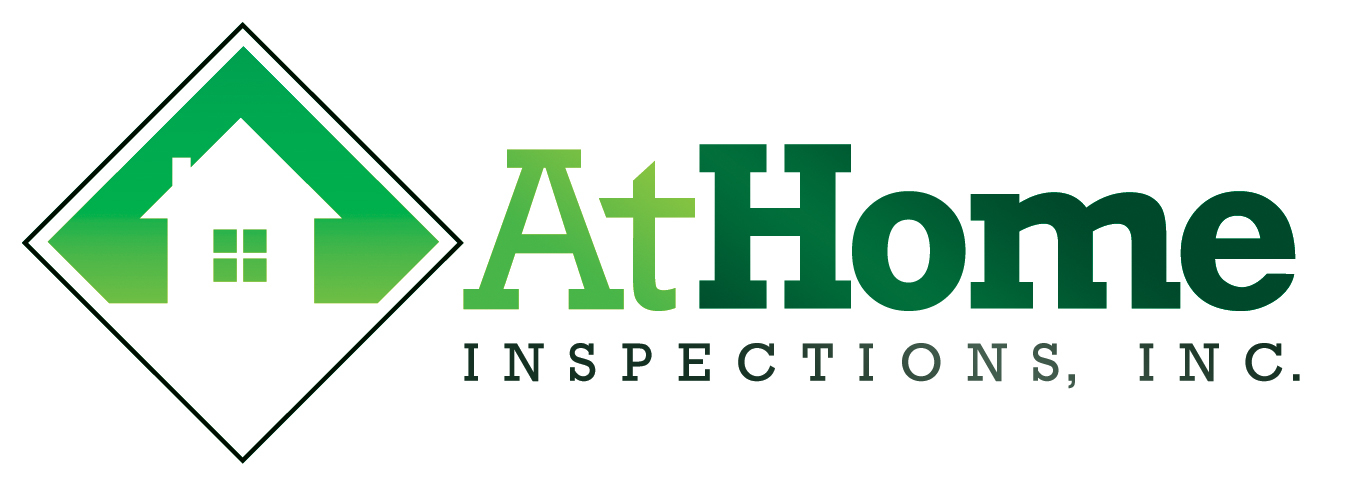
.jpg)

